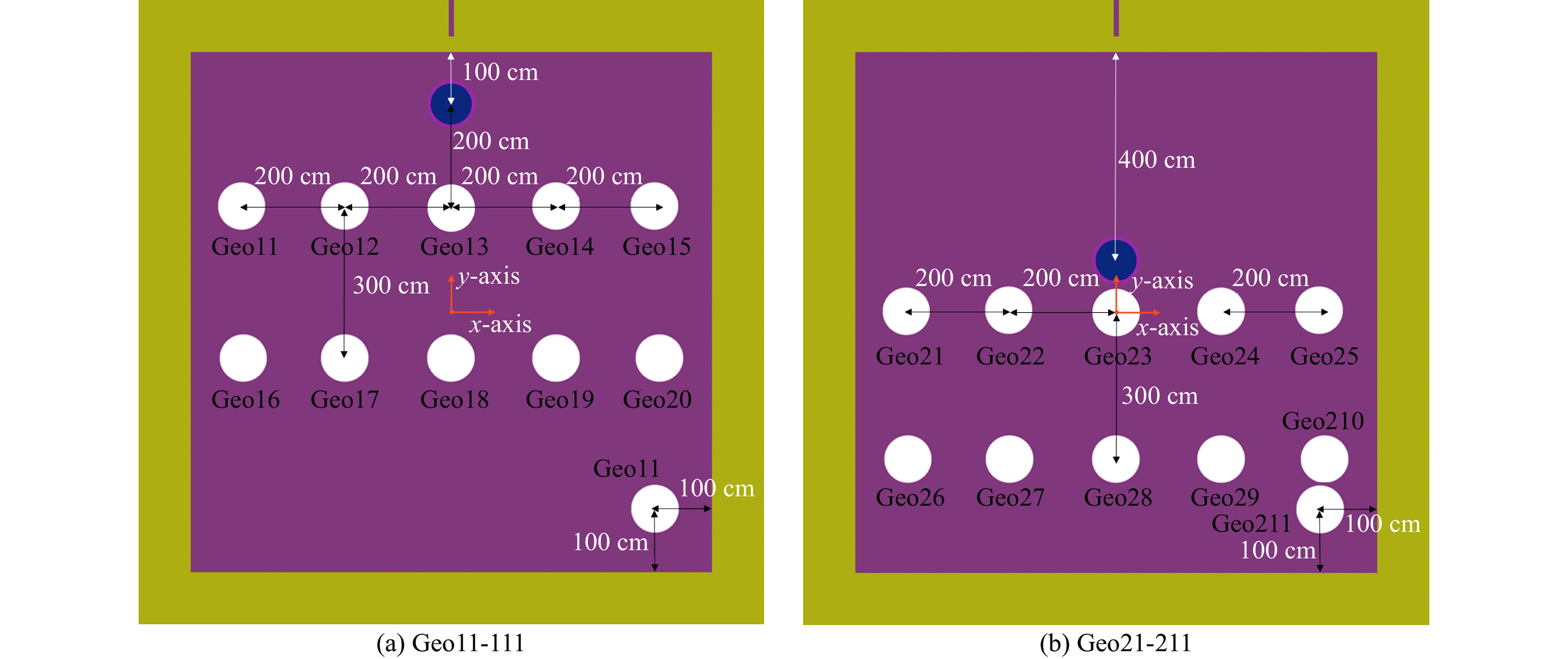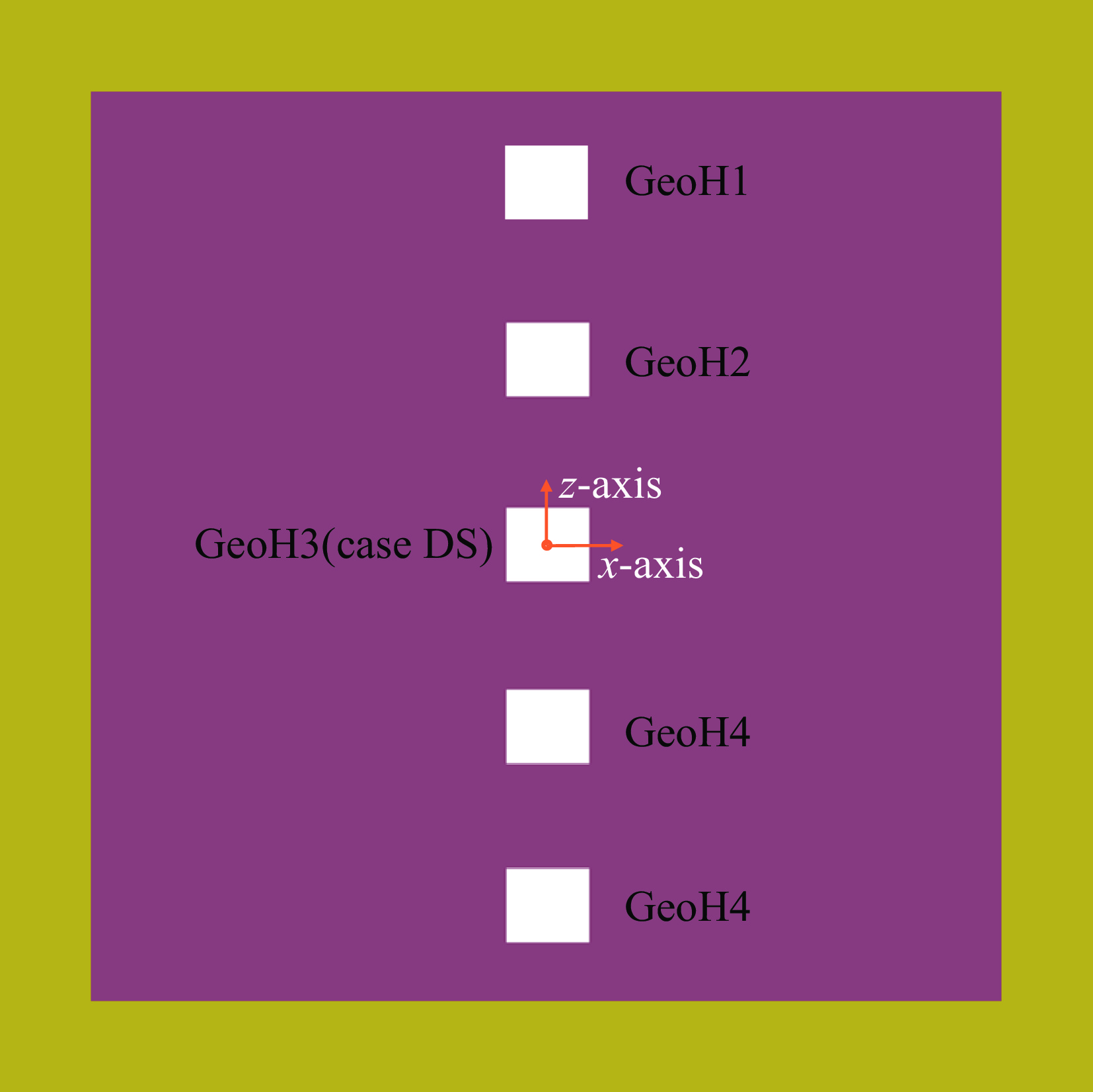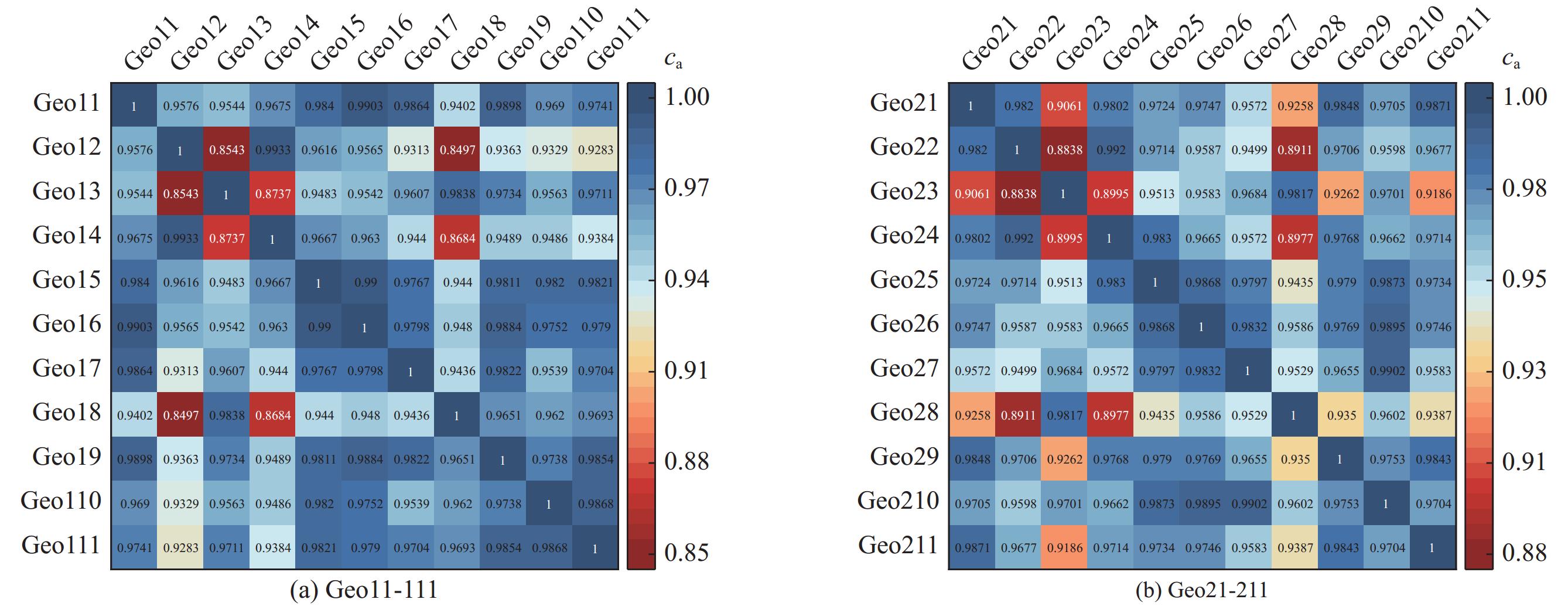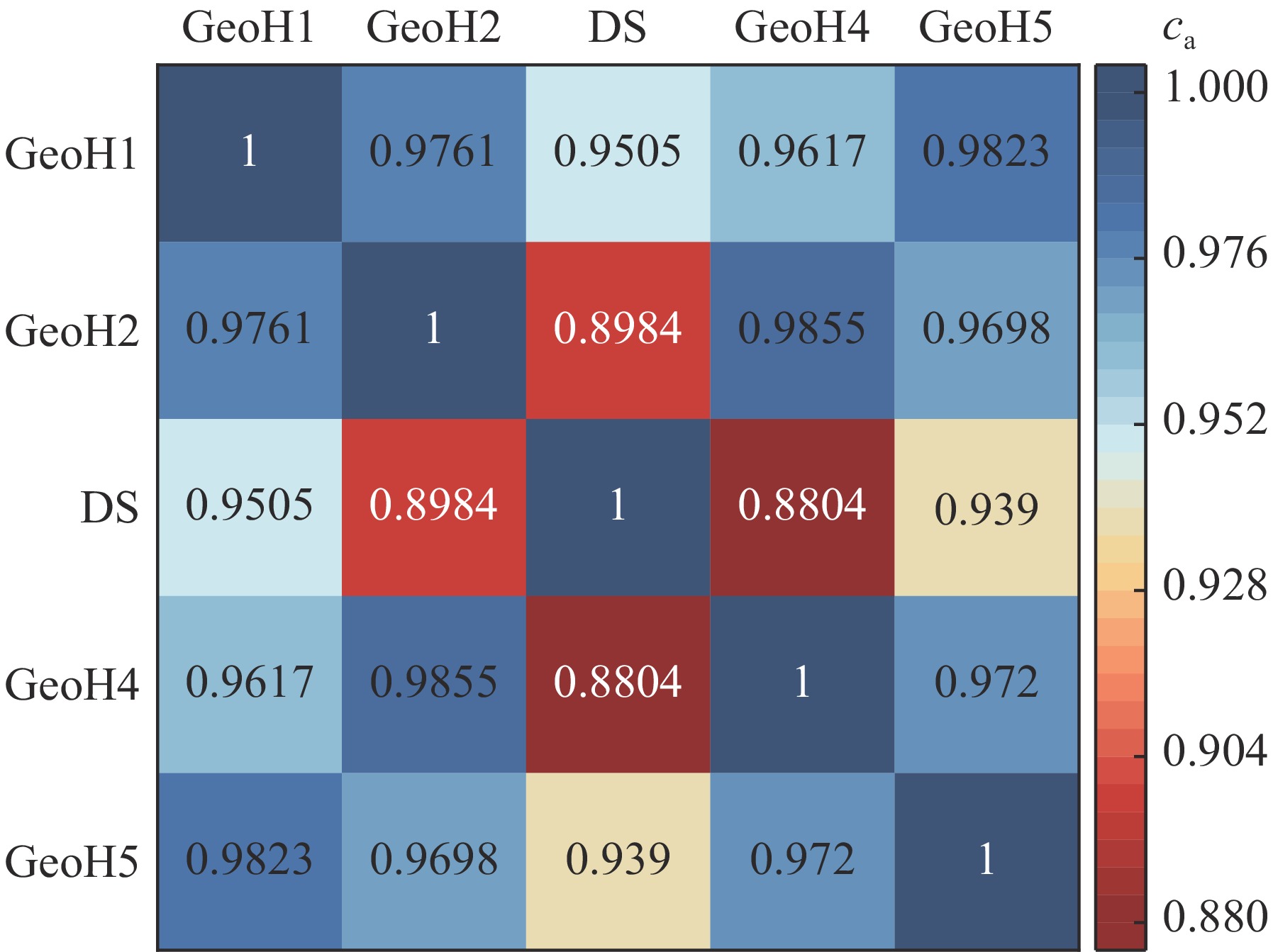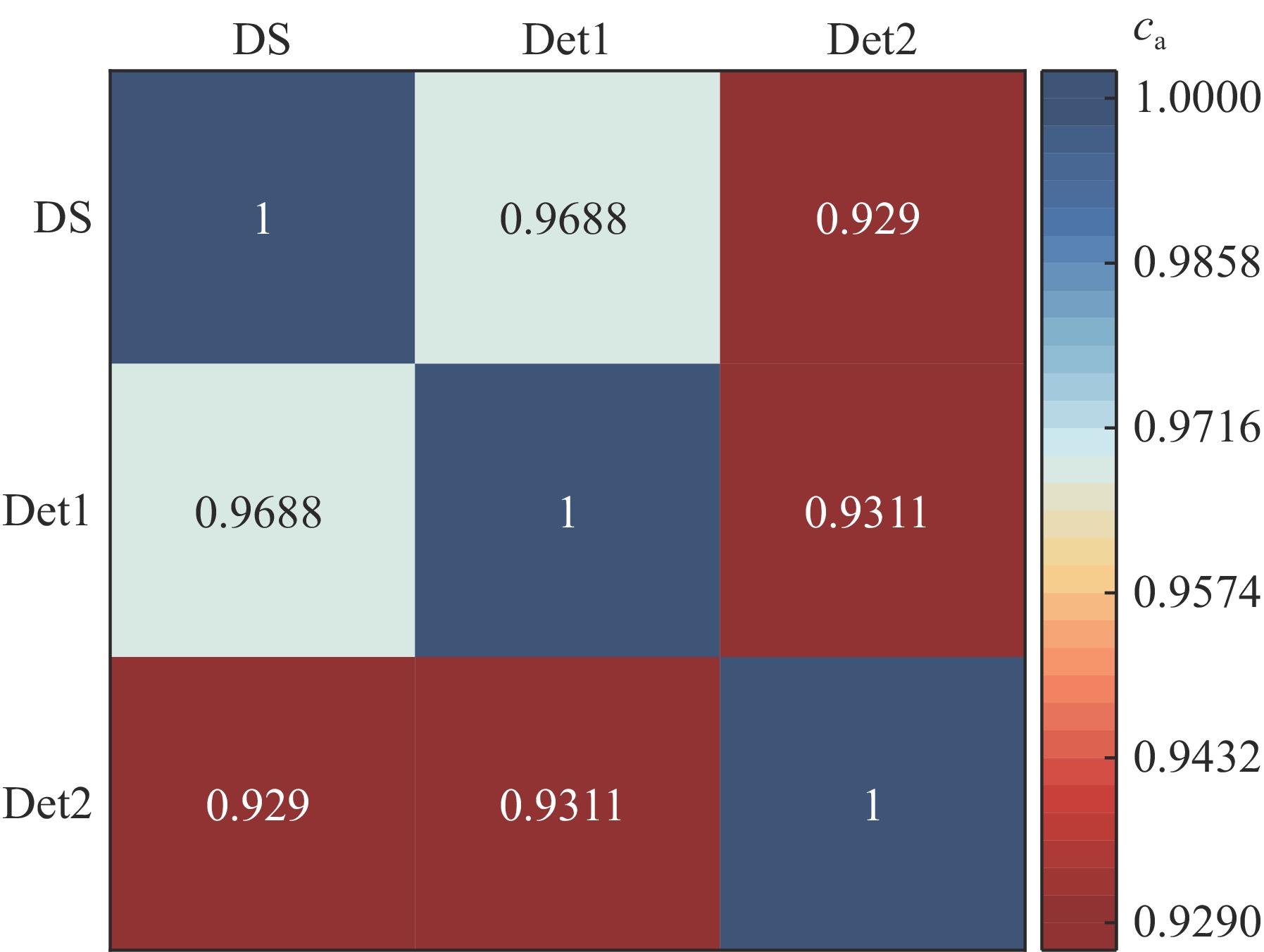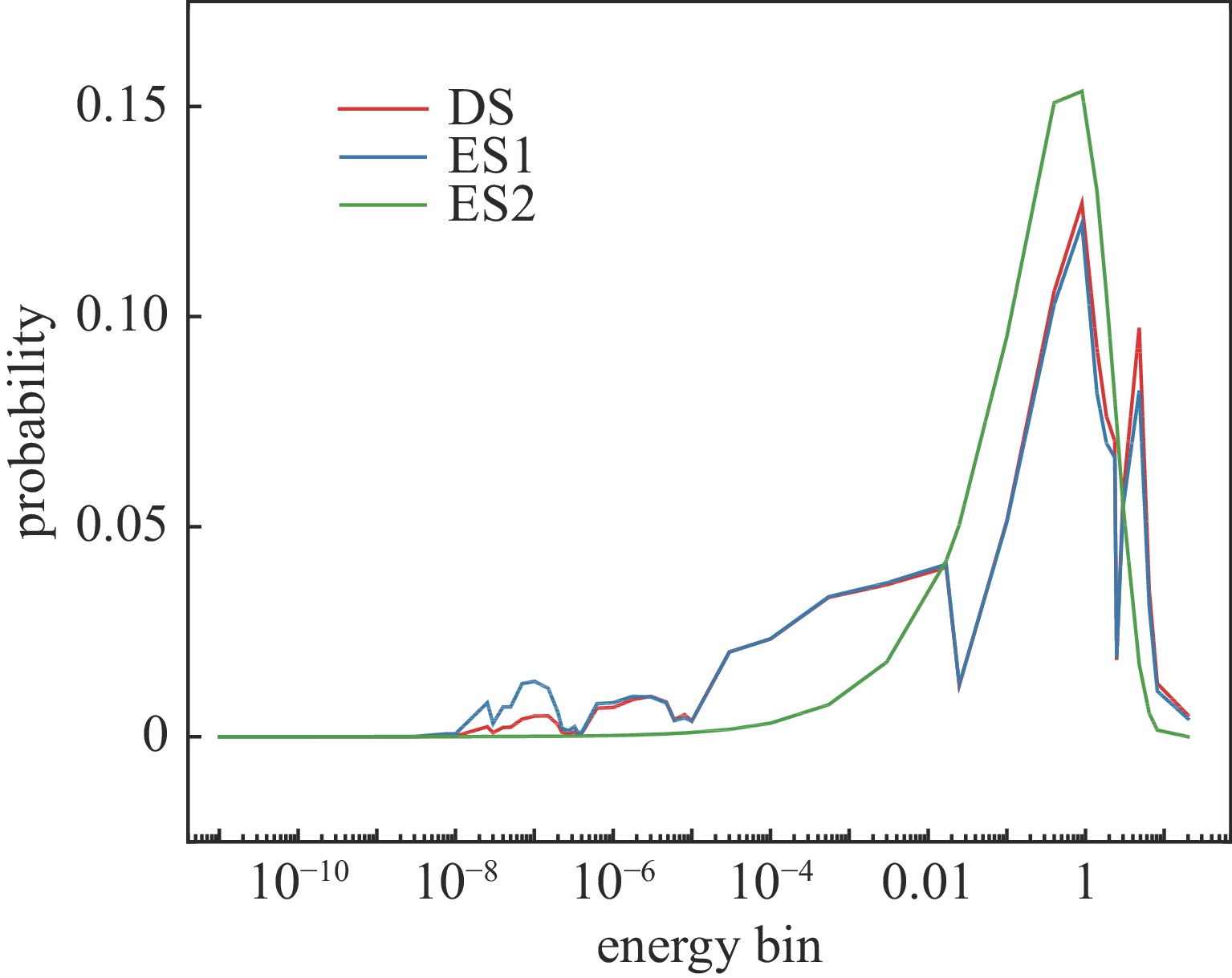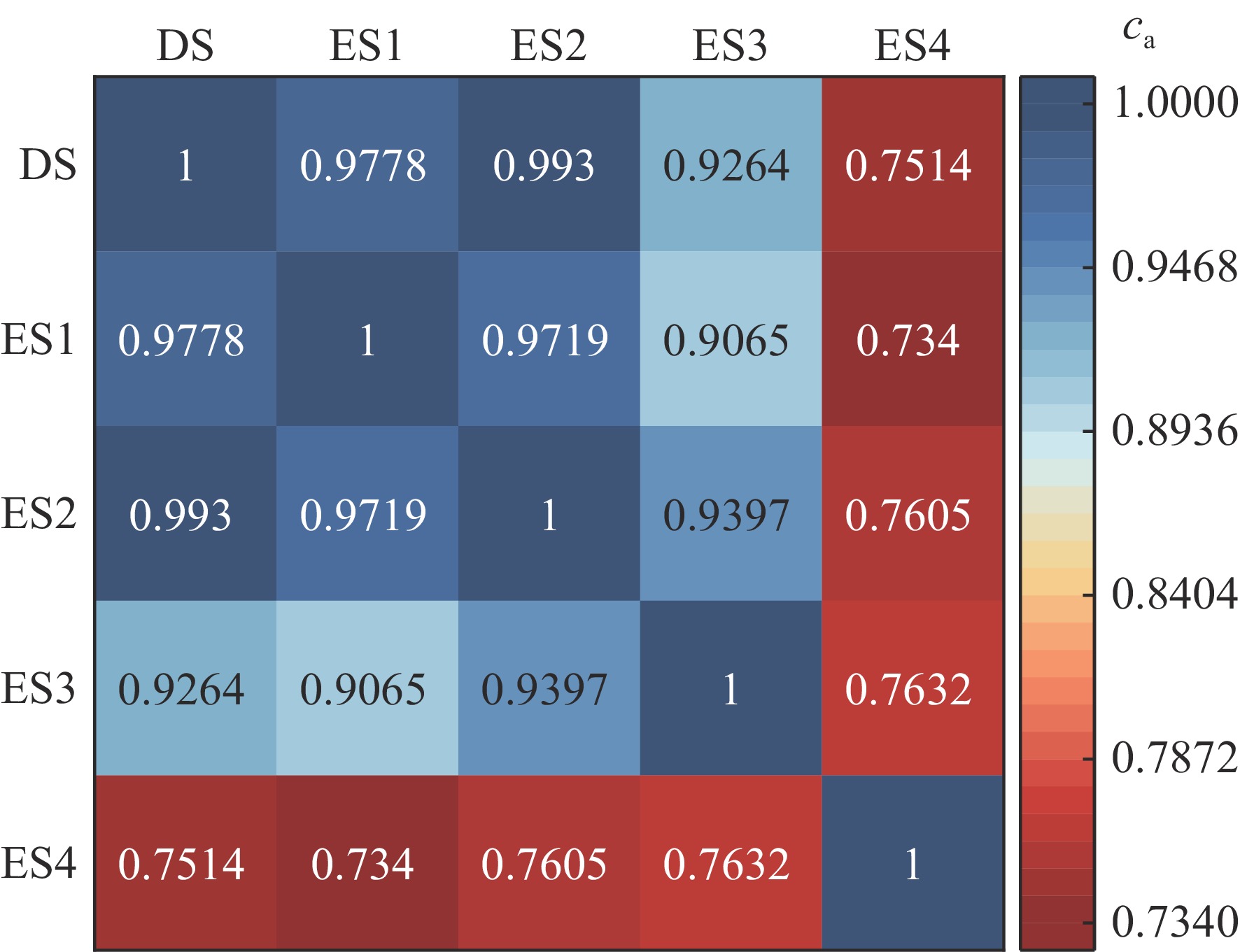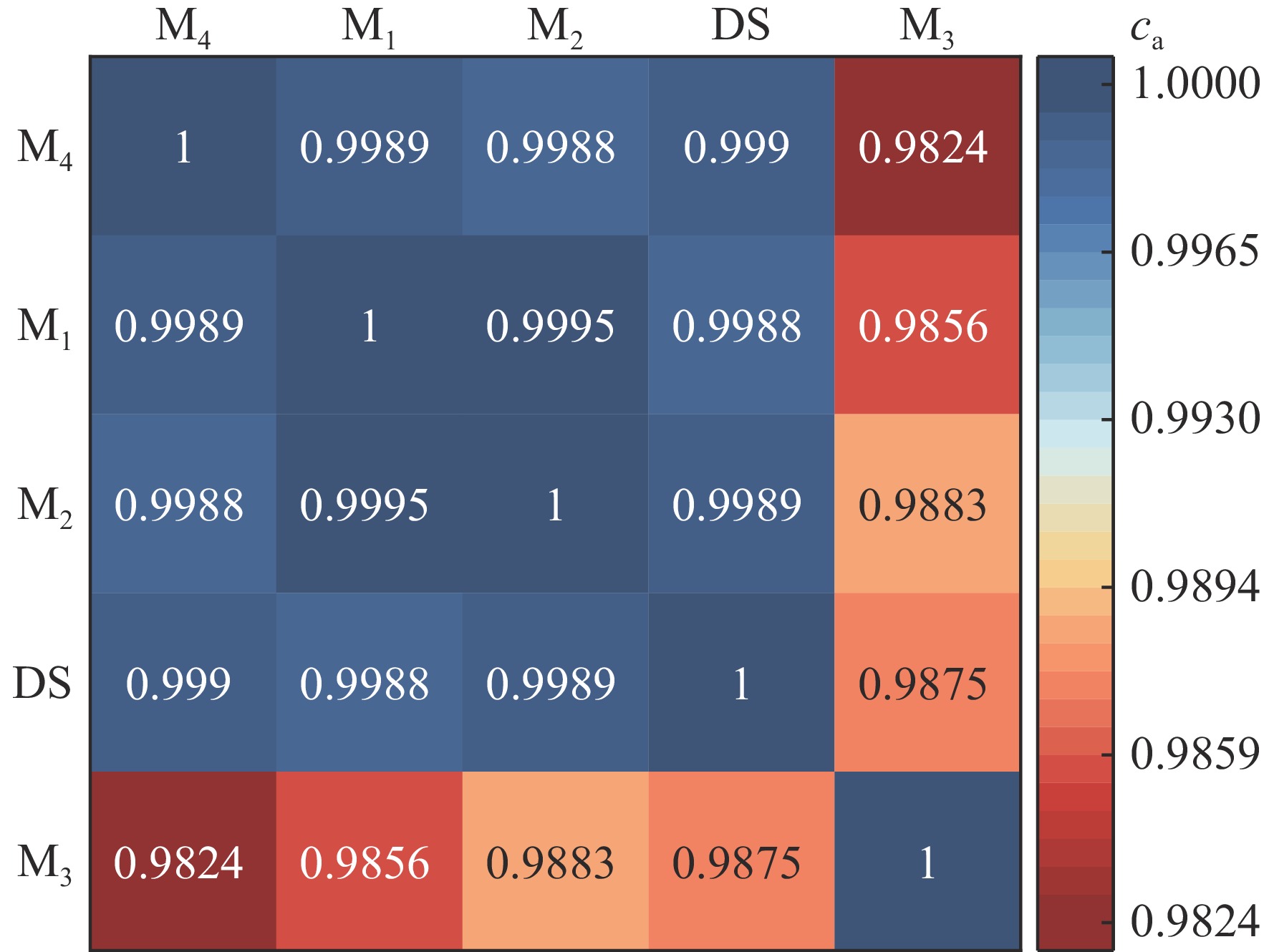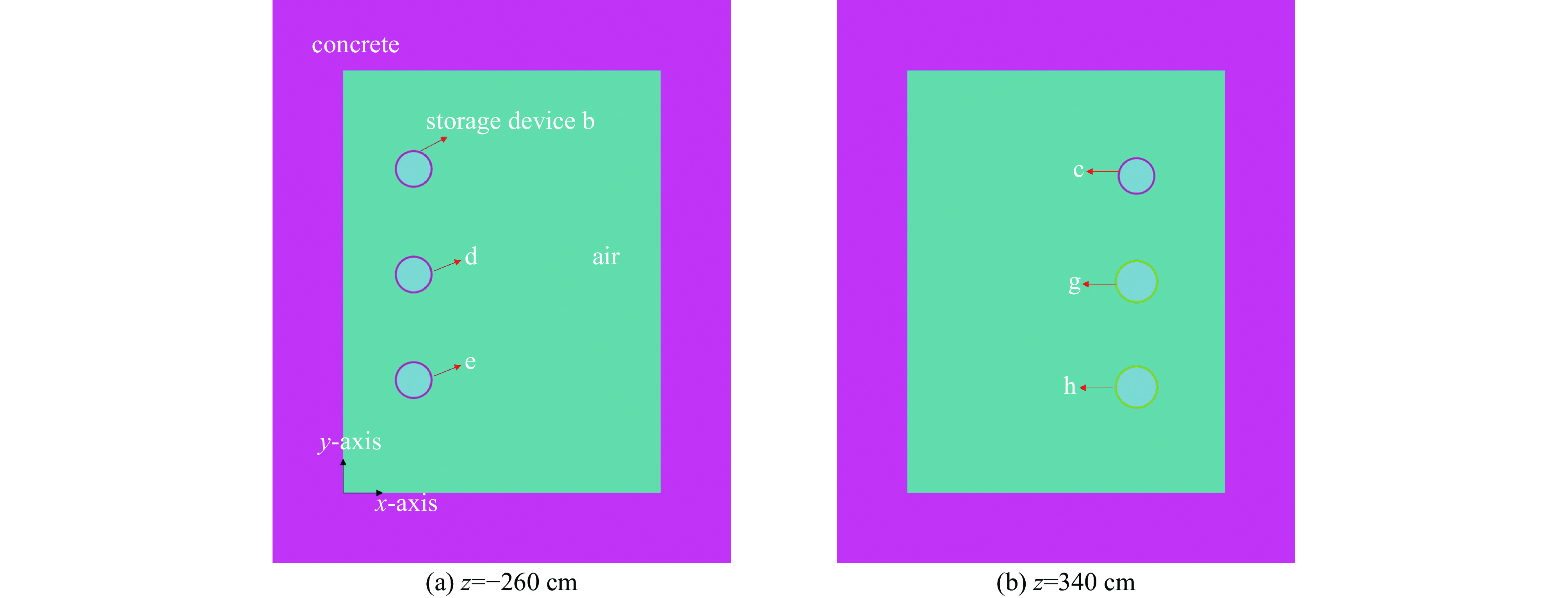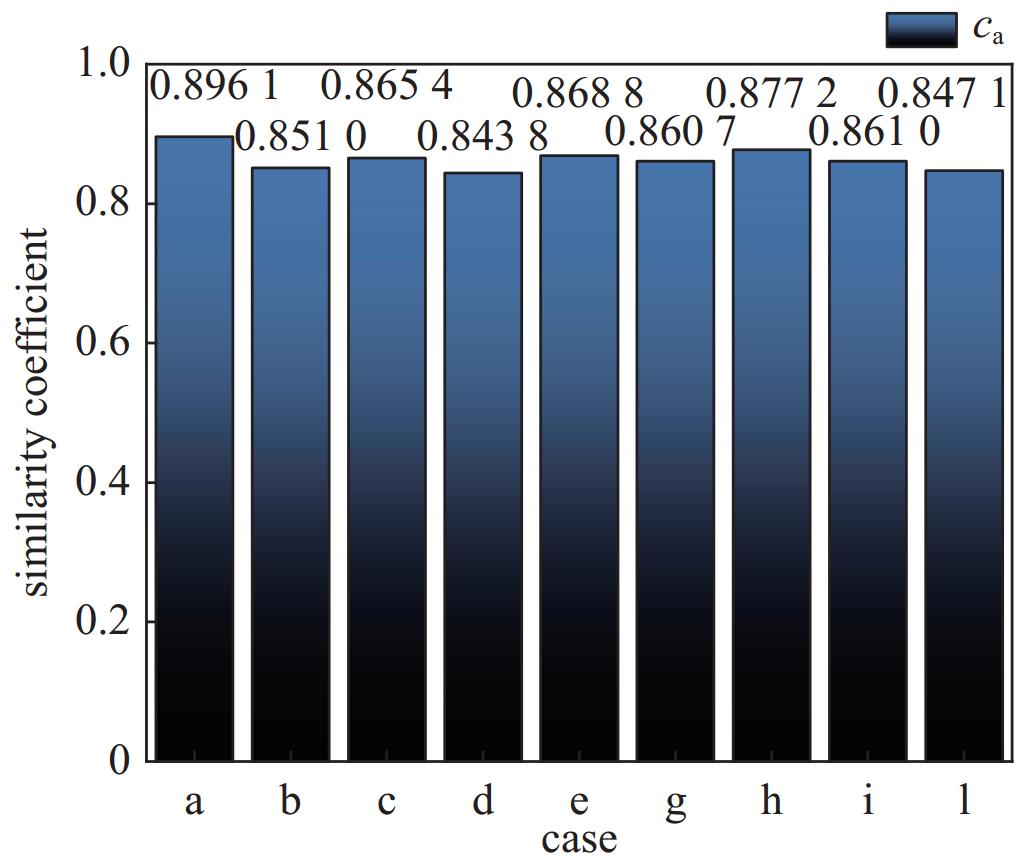Similarity analysis applied to nuclear criticality accident alarm systems
-
摘要: 为了确定用于场所监测的临界事故报警系统合适的报警阈值,需选用相似的基准实验进行验证。根据设备室临界事故报警系统的特征,构建了简易模型和具有代表性的包含多个设备的虚拟设备室模型。针对固定源问题,在蒙卡程序(RMC)中实现了基于微分算符抽样法计算敏感性系数的功能。随后,运用敏感性和不确定度分析方法对系统间的相似性进行了研究,并深入分析了影响相似性的因素。计算分析结果显示,对于简易模型,源项能谱和混凝土材料对系统间的相似性有较大影响,探测器与内侧墙面之间的混凝土厚度对相似性有一定影响,而源项的几何位置对相似性的影响较小,乏燃料成分对相似性的影响可以忽略不计。根据本文提出的相似性分析流程进行计算得出,简易模型与虚拟设备室模型的相似性较高,基于简易模型的研究结论适用于虚拟设备室模型,可为工程上的临界报警系统相似性研究提供参考。Abstract: To determine the alarm threshold for criticality accident alarm systems (CAASs) used in facility monitoring, it is necessary to select appropriate benchmark experiments for validation. This paper constructs a simplified model and a representative virtual equipment room model, taking into consideration the characteristics of CAASs in the equipment room. The functionality of calculating sensitivity coefficients using the differential operator sampling approach in the Monte Carlo code RMC was implemented to solve the fixed source problem. Following that, a sensitivity and uncertainty analysis was conducted to examine the similarities between systems and explore the factors influencing them. The results indicate that the neutron source term spectrum and the concrete material significantly affect the similarity between systems. Additionally, the thickness of the concrete between the detector and the inner wall has a moderate influence on similarity, whereas the geometric position of the source term has a negligible impact. The impact of the spent fuel composition on similarity can be neglected. Based on the similarity analysis procedure proposed in this study, it is concluded that the simplified model exhibits a relatively high similarity to the virtual equipment room model. Hence, the research conclusions based on the simplified model are applicable to the virtual equipment room model, offering valuable insights for similarity studies of CAASs in engineering.
-
表 1 小模型DS算例尺寸数据
Table 1. Dimensions of case DS
x-coordinate range/cm y-coordinate range/cm z-coordinate range/cm inside of wall −500~+500 −500~+500 −500~+500 outside of wall −600~+600 −600~+600 −600~+600 tunnel −5~+5 530~600 −5~+5 detector −5~+5 530~540 −5~+5 表 2 小模型DS算例设备与中子源尺寸数据
Table 2. Dimensions of the storage device and the neutron source for case DS
x-coordinate of axis/cm y-coordinate of axis/cm z-coordinate range/cm radius/cm storage device 0 434.5 −40.5~+40.5 45.5 neutron source 0 323.5 −40.5~+40.5 45.5 表 3 虚拟设备室整体尺寸
Table 3. Dimensions of the virtual equipment room model
x-coordinate range/cm y-coordinate range/cm z-coordinate range/cm inside of wall 0~+675 0~+900 −600~+600 outside of wall −150~+825 0~+1050 −800~+750 表 4 小模型DS算例与虚拟设备室各算例之间的相似性系数贡献
Table 4. Most important contributions from varied reactions to similarity coefficients between cases DS and the virtual equipment room model
nuclide-reaction contributions to similarity coefficient a b c d e g h i l H-inelastic scattering 4.71×10−1 4.17×10−1 4.16×10−1 4.03×10−1 4.31×10−1 4.15×10−1 4.50×10−1 4.15×10−1 4.01×10−1 28Si-(n, γ) 2.58×10−1 2.64×10−1 2.72×10−1 2.69×10−1 2.67×10−1 2.71×10−1 2.60×10−1 2.72×10−1 2.70×10−1 58Ni-(n, γ) 1.55×10−1 1.59×10−1 1.63×10−1 1.61×10−1 1.60×10−1 1.62×10−1 1.56×10−1 1.64×10−1 1.62×10−1 16O-elastic scattering −3.92×10−2 −4.23×10−2 −4.16×10−2 −4.38×10−2 −4.17×10−2 −4.18×10−2 −4.09×10−2 −4.40×10−2 −4.15×10−2 39K-(n, γ) 2.01×10−2 2.06×10−2 2.12×10−2 2.10×10−2 2.08×10−2 2.11×10−2 2.03×10−2 2.12×10−2 2.11×10−2 40Ca-(n, γ) 8.28×10−3 8.47×10−3 8.73×10−3 8.62×10−3 8.56×10−3 8.67×10−3 8.34×10−3 8.73×10−3 8.67×10−3 H-(n, γ) 7.97×10−3 8.14×10−3 8.39×10−3 8.29×10−3 8.22×10−3 8.34×10−3 8.02×10−3 8.40×10−3 8.33×10−3 H-elastic scattering 5.33×10−3 5.93×10−3 5.91×10−3 5.95×10−3 5.65×10−3 5.83×10−3 5.67×10−3 5.94×10−3 6.22×10−3 27Al-(n, γ) 4.52×10−3 4.62×10−3 4.77×10−3 4.71×10−3 4.67×10−3 4.74×10−3 4.55×10−3 4.77×10−3 4.73×10−3 -
[1] GB/T15146.9-1994, 反应堆外易裂变材料的核临界安全 核临界事故探测与报警系统的性能及检验要求[S]GB/T15146.9-1994, Nuclear criticality safety for fissile materials outside reactor-Performance and testing requirements for nuclear criticality detection and alarm systems[S] [2] 丘意书. 基于RMC的核数据敏感性与燃耗不确定度分析方法研究[D]. 北京: 清华大学, 2017Qiu Yishu. Nuclear data sensitivity and uncertainty analysis in the burnup calculation based on RMC code[D]. Beijing: Tsinghua University, 2017 [3] Broadhead B L, Hopper C M, Childs R L, et al. Sensitivity and uncertainty analyses applied to criticality safety validation, methods development. Volume 1[R]. Oak Ridge National Lab., 1999. [4] Marshall W J, Clarity J B, Rearden B T. A review of TSUNAMI applications[J]. Transactions of the American Nuclear Society, 2020, 123(1): 795-798. [5] Zheng Youqi, Qiao Liang, Wan Chenghui, et al. Sensitivity analysis and similarity evaluation of sodium-cooled fast reactor in large size[J]. Annals of Nuclear Energy, 2019, 125: 283-290. doi: 10.1016/j.anucene.2018.11.026 [6] Ning Tong, Zhou Qi, Chen Xiaoliang, et al. Application of similarity analysis method in zero-power experimental validation[J]. The European Physical Journal Conferences, 2020, 239: 17017. doi: 10.1051/epjconf/202023917017 [7] Wang Kan, Li Zeguang, She Ding, et al. RMC—A Monte Carlo code for reactor core analysis[J]. Annals of Nuclear Energy, 2015, 82: 121-129. doi: 10.1016/j.anucene.2014.08.048 [8] Rief H. Generalized Monte Carlo perturbation algorithms for correlated sampling and a second-order Taylor series approach[J]. Annals of Nuclear Energy, 1984, 11(9): 455-476. doi: 10.1016/0306-4549(84)90064-1 [9] Choi S H, Shim H J, Kim C H. Development of generalized perturbation theory algorithms for Monte Carlo eigenvalue calculations[J]. Nuclear Science and Engineering, 2018, 189(2): 171-187. doi: 10.1080/00295639.2017.1388089 [10] 江世航, 徐源, 王侃, 等. 基于RMC的蒙卡屏蔽计算敏感性分析方法[C]//第十九届反应堆数值计算与粒子输运学术会议暨2023年反应堆物理会议Jiang Shihang, Xu Yuan, Wang Kan, et al. RMC-based Monte Carlo shielding computation sensitivity analysis method[C]//CORPHY2022 -




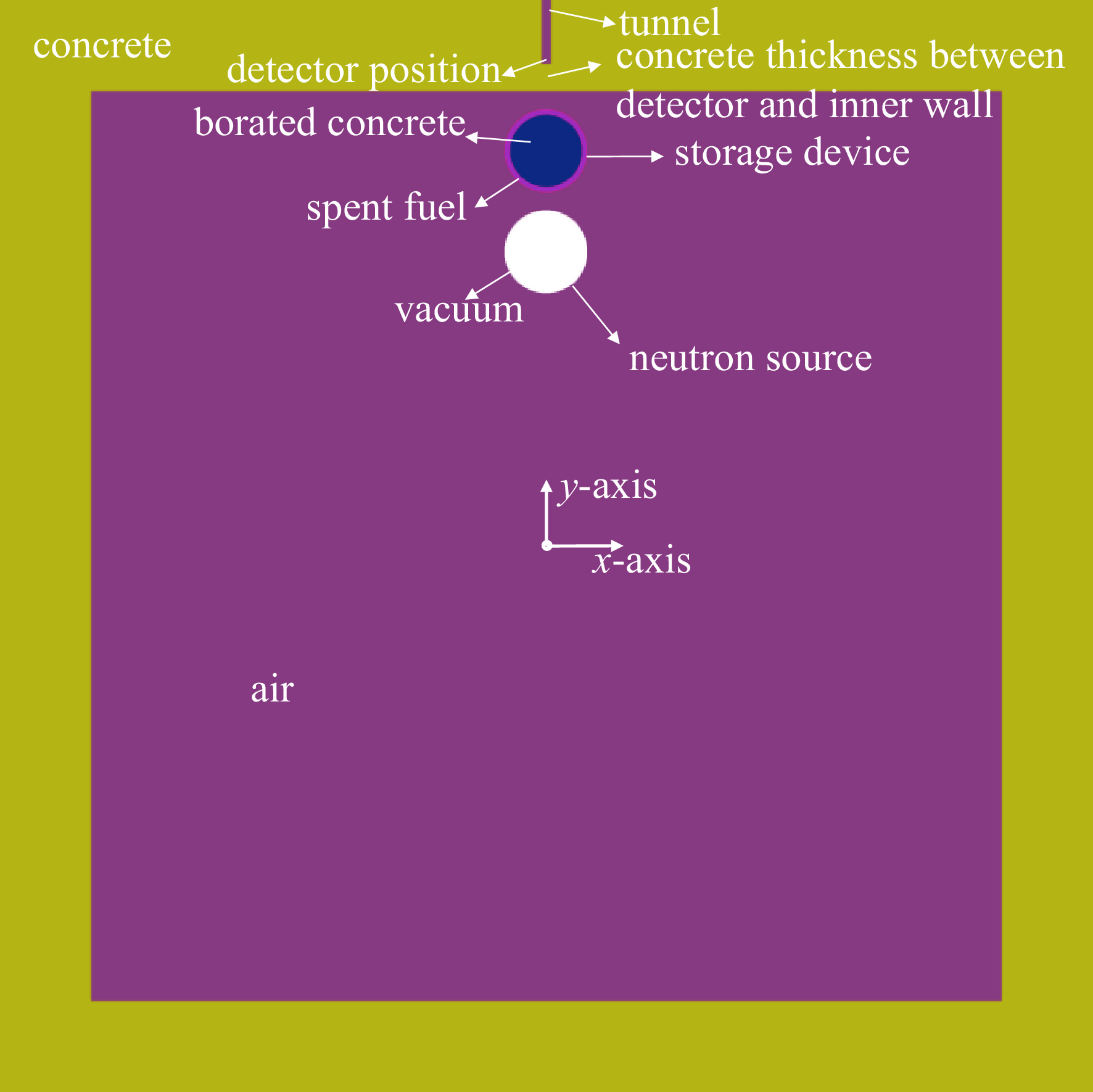
 下载:
下载:
